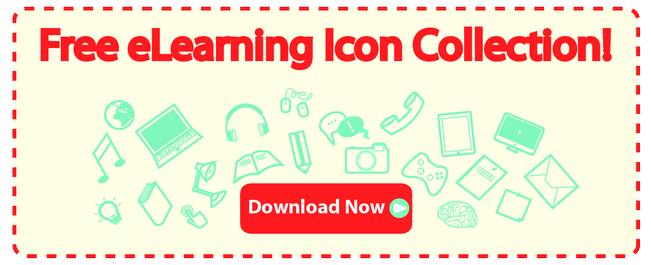Most existing guidelines for eLearning planning and implementation are designed with larger organizations in mind and assume a level of staffing, IT support, and budget because traditionally large corporations are the ones with sufficient resources to create eLearning solutions. However, eLearning is rapidly growing in small companies and nonprofit organizations, where typically a single person is responsible for all eLearning activities — in other words, an eLearning department of one.
A one-man eLearning department must be highly talented and possess a combination of skill sets: he or she should know how to use authoring tools, design, and give a great voice to content. In other words, a one-man eLearning professional needs to be a programmer, project manager, graphic artist, and media specialist all rolled into one.
If you can relate to the above description, you need to develop your skills to ensure your eLearning courses are the best that they can be. The following list takes a look at each of the four key skills and explains what you can do to improve.

1. Instructional Design: Understanding how people learn to encourage effective learning experiences
Just like face-to-face training, the success of an eLearning course comes down to planning — or instructional design, which refers to the process during which the program is designed, developed, and delivered.
In order for you to ensure the program is engaging, effective, and efficient, content should be based around tested theories of learning. For this reason, often the best courses are created by professional instructional designers, who know how to create materials and plan courses in a way that will enhance the learning opportunities for individuals.
Instructional design is especially important for eLearning courses where a bad design could mean that students struggle to find resources, interact, and learn in general. Yet more difficulties arise when instructions are ambiguous, there are glitches in technology, and applications are cumbersome.
To ensure you do not make any of these mistakes, check out these free resources:
- Free Course: The ABC’s of Instructional Design (Udemy)
- Free eBook: 62 Tips on Effective eLearning Instructional Design
- Free Course: Breaking Into Instructional Design (eLearning Coach).
- Time Tracking Template for Instructional Design
2. Visual Design Skills
Even if your course has great content, it can be lost through a confusing interface or distracting graphics that make it difficult for trainees to absorb the learning material. However, you can dramatically improve the look and feel of your learning deliverables with a just basic knowledge of visual design principles.
You must base your design around proven results rather than your own instinct about what will work. As well, you must be able to visualize color combinations, use different graphic creation and editing programs, and make decisions about backgrounds, typography, and file formats to ensure seamless integration.
Learn more about how to achieve this by reading:
- Free ebook: 131 Tips on Graphics and Animations for eLearning
- Better Than Bullet Points: Creating Engaging e-Learning with PowerPoint
- Free Webinar Series: Visual Design Principles for e-Learning
If you are looking for a short burst of information, check out this article.
3. Multimedia Production and Authoring
Most eLearning courses include voiceover audio, video, photos, music and animations. Therefore, one-man eLearning departments need to record and edit audio, video and graphic elements.
Different authoring tools allows you to load different assets for course; however, each authoring tool also requires different skill levels. To achieve your desired end result, you must ensure that you possess both the right software and skill set. Especially, use an authoring tool that enables you to easily and quickly load these types of assets in your courses.
Before researching what authoring tools are available, consider the points listed in this article by Course Avenue.
4. Managing Your eLearning Project
The success of your course rests on the project management. First, you will need to create a plan with the sponsor or department who is commissioning the course. Next, you must collaborate with subject matter experts or trainers to gather and build content. After studying the content and subject matter, the instructional design phase begins. Then comes deployment and production. Finally, a series of test need to be conducted to ensure everything is deployed correctly.Throughout this process, you must keep within your budget and timeline. Basically, understanding how to manage an eLearning project will ensure the project can be delivered on time with maximum quality..
To ensure success with your project, you must:
- Identify the core issue.
- Find the right subject matter expert.
- Agree upon goals.
- Maintain close communication.
Additionally, your job as a project manager means keeping everything organized, ensuring that you are meeting deadlines, and fulfilling your leader’s expectations while staying within the budget. In other words, it is much like managing any other type of project.
For more practical advice about becoming a great eLearning manager, check out the following resources:
- 11 Skills Every e-Learning Project Manager Must Have
- Video: eLearning Project Management
- Top 10 tips for Managing eLearning Projects
- Project Management Tips for eLearning Practitioners
If you have basics knowledge about these four topics, chances are high that you can create interesting and truly effective eLearning courses.




